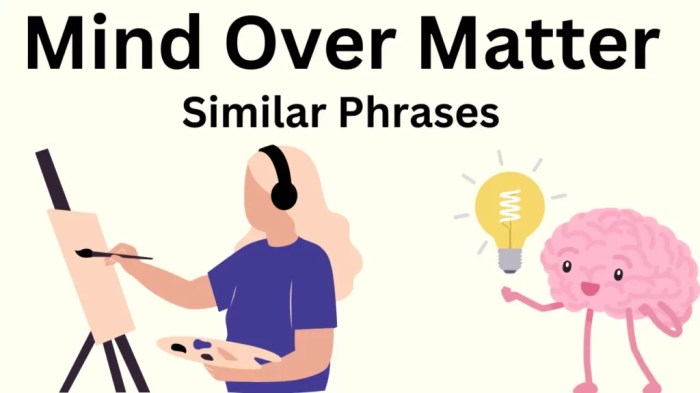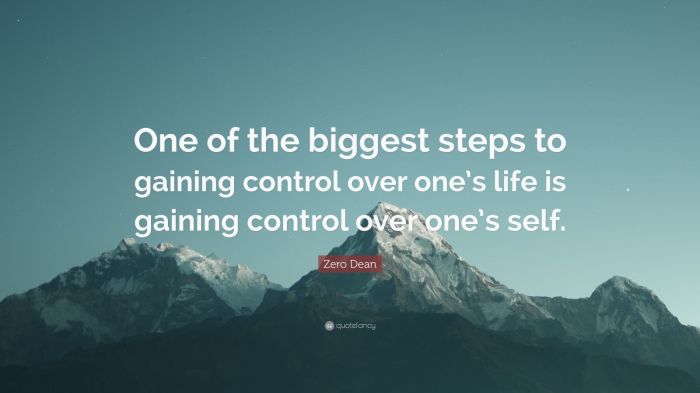How to Meditate for Gaining Control Over Your Thoughts takes you on a journey to explore the art of mindfulness and thought regulation, all while sipping a cup of Earl Grey. Ready to dive in?
In this insightful guide, we’ll uncover the secrets of meditation and how it can transform your mental clarity and daily life with a touch of British charm.
Introduction to Meditation for Gaining Control Over Your Thoughts

When it comes to gaining control over your thoughts, meditation can be a powerful tool to help you achieve mental clarity and focus. Meditation is a practice that involves training your mind to focus and redirect your thoughts. It has been used for centuries to promote relaxation, reduce stress, and enhance self-awareness.
Benefits of Meditation in Improving Thought Control
Meditation can help improve thought control by allowing you to observe your thoughts without judgment. By practicing mindfulness, you can become more aware of your thought patterns and learn to let go of negative or intrusive thoughts. This can lead to a greater sense of calm and mental clarity.
Connection Between Meditation and Mental Clarity
Through regular meditation practice, you can train your mind to become more focused and present. This heightened awareness can help you stay centered and grounded, even in the face of distractions or challenges. By cultivating a sense of inner peace through meditation, you can experience greater mental clarity and emotional balance.
Positive Impact of Gaining Control Over Thoughts
- Improved decision-making: By gaining control over your thoughts, you can make decisions from a place of clarity and rationality, rather than being driven by emotions or impulses.
- Reduced stress and anxiety: When you learn to manage your thoughts through meditation, you can reduce the impact of stress and anxiety on your overall well-being.
- Enhanced focus and productivity: With better control over your thoughts, you can improve your ability to concentrate on tasks and achieve greater productivity in your daily life.
Understanding the Basics of Meditation

Meditation is a powerful tool for gaining control over your thoughts and calming the mind. Understanding the basics of meditation is essential to effectively harness its benefits.
Feeling overwhelmed and in need of calmness and equanimity? Meditation can help you achieve inner peace and a sense of balance. Learn how to incorporate meditation into your daily routine to cultivate calmness and equanimity by visiting How to Meditate for Cultivating Calmness and Equanimity.
Different Meditation Techniques
- Mindfulness Meditation: Focuses on being present in the moment, observing thoughts without judgment, and redirecting attention to the present.
- Guided Visualization: Involves imagining peaceful scenes or scenarios to promote relaxation and reduce stress.
- Transcendental Meditation: Involves silently repeating a mantra to achieve a state of relaxed awareness.
- Loving-Kindness Meditation: Focuses on cultivating feelings of compassion and goodwill towards oneself and others.
Finding a Quiet and Comfortable Space, How to Meditate for Gaining Control Over Your Thoughts
Creating a tranquil environment for meditation is crucial for enhancing focus and relaxation.
Find a quiet space free from distractions, sit comfortably with your back straight, and consider using cushions or a meditation pillow for support.
Role of Breathing Techniques
Controlled breathing techniques play a vital role in calming the mind and enhancing concentration during meditation.
Are you looking to enhance your focus and productivity? One effective way is through meditation. By practicing mindfulness and deep breathing techniques, you can improve your concentration and get more done in less time. Check out this guide on How to Meditate to Increase Your Focus and Productivity for useful tips and tricks.
Practice deep breathing, inhaling and exhaling slowly and deeply, focusing on the sensation of breath entering and leaving the body.
Unlock your inner strength and empower yourself through meditation. By connecting with your inner self and practicing mindfulness, you can build resilience and confidence. Discover more about How to Meditate for Empowering Your Inner Strength and start your journey towards personal growth and empowerment.
Steps to Start Meditating for Control Over Your Thoughts
To begin a meditation practice for gaining control over your thoughts, follow these steps and tips:
Setting Up Your Space
- Find a quiet and comfortable space where you won’t be disturbed.
- Sit in a comfortable position, either on a cushion on the floor or in a chair with your back straight.
- Dim the lights or light a candle to create a soothing atmosphere.
Focusing Your Mind
- Start by taking deep breaths to relax your body and mind.
- Focus on your breath, feeling the inhale and exhale without controlling it.
- When thoughts arise, acknowledge them without judgment and gently guide your focus back to your breath.
Maintaining Your Practice
- Start with short sessions, around 5-10 minutes, and gradually increase the duration as you become more comfortable.
- Consistency is key, aim to meditate daily to build a routine and see progress in controlling your thoughts.
- Avoid distractions by turning off notifications on your phone and creating a dedicated meditation time.
Overcoming Challenges in Meditation for Thought Control

In the practice of meditation for gaining control over your thoughts, there are common obstacles that individuals may face. It is essential to be aware of these challenges and have strategies in place to overcome them effectively. Patience and consistency play a crucial role in dealing with these obstacles during meditation.
Restlessness and Wandering Thoughts
One of the most common challenges in meditation is dealing with restlessness and wandering thoughts. It is natural for the mind to wander, especially when you are trying to focus and control your thoughts. To overcome this challenge, try the following strategies:
- Acknowledge the wandering thoughts without judgment and gently bring your focus back to your breath or mantra.
- Practice mindfulness by observing your thoughts without getting attached to them or letting them distract you.
- Use grounding techniques such as focusing on the sensations in your body or the sounds around you to bring your attention back to the present moment.
Importance of Patience and Consistency
Developing control over your thoughts through meditation is a gradual process that requires patience and consistency. It is essential to understand that challenges will arise, and it may take time to see significant results. Here are some tips to cultivate patience and consistency in your meditation practice:
- Set realistic goals and expectations for your meditation practice, and be gentle with yourself as you navigate through challenges.
- Establish a regular meditation routine and commit to practicing daily, even if it is for a short period of time.
- Celebrate small victories and progress along the way to stay motivated and encouraged on your meditation journey.
Enhancing Thought Control Through Mindfulness Practices: How To Meditate For Gaining Control Over Your Thoughts

Mindfulness is the practice of being fully present and aware of your thoughts, emotions, and sensations without judgment. It plays a crucial role in gaining control over thoughts by helping individuals observe their mental processes objectively and non-reactively.
Benefits of Practicing Mindfulness for Thought Control
- Increased Self-Awareness: Mindfulness allows individuals to become more aware of their thought patterns and triggers, enabling them to identify negative thoughts and emotions before they escalate.
- Improved Emotional Regulation: By practicing mindfulness, individuals can develop the ability to observe their emotions without getting carried away by them, leading to better control over impulsive reactions.
- Enhanced Focus and Concentration: Mindfulness practices help in training the mind to stay focused on the present moment, reducing distractions and promoting mental clarity.
Integration of Mindfulness Techniques into Daily Routines
- Mindful Breathing: Take a few minutes each day to focus on your breath, observing the inhalation and exhalation without trying to change them. This simple practice can be integrated into morning routines or before bedtime.
- Body Scan Meditation: Spend some time scanning your body from head to toe, noticing any areas of tension or discomfort. This practice can be done during breaks at work or as a wind-down routine in the evening.
- Mindful Walking: Pay attention to each step as you walk, feeling the ground beneath your feet and the movement of your body. This practice can be incorporated into daily walks or commutes.
As we reach the end of our meditation quest, remember to breathe, stay present, and embrace the power of your thoughts. Now, go forth and conquer your mind!